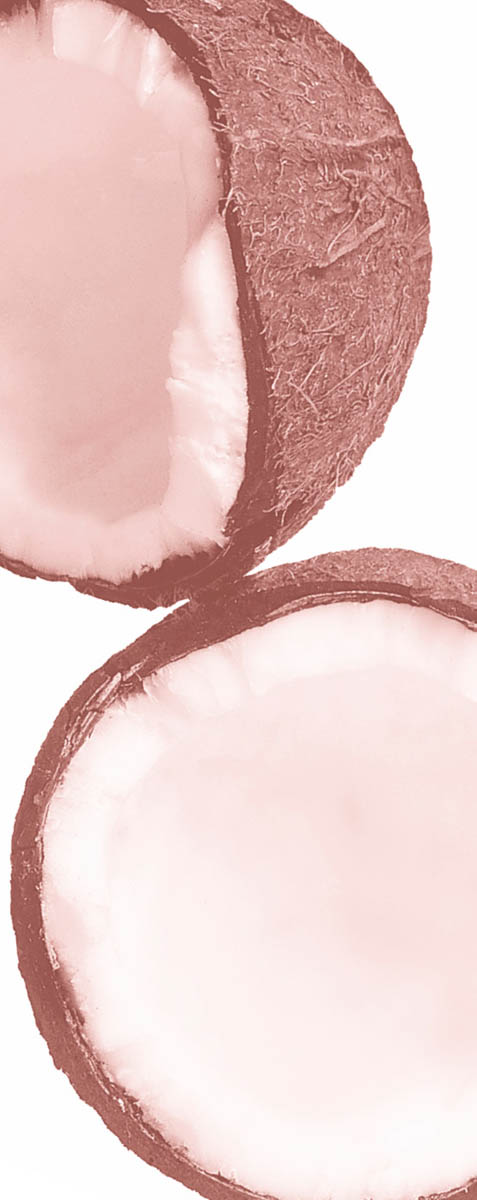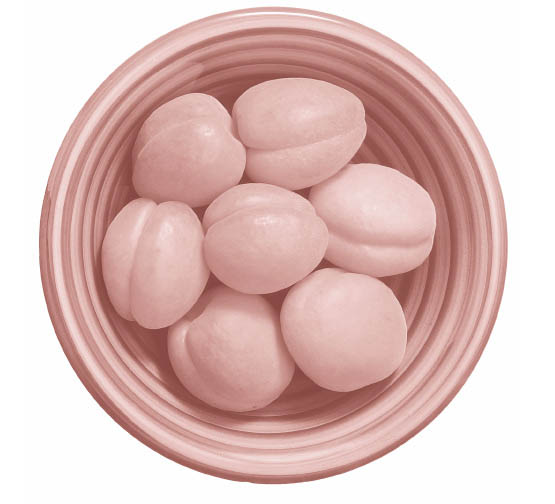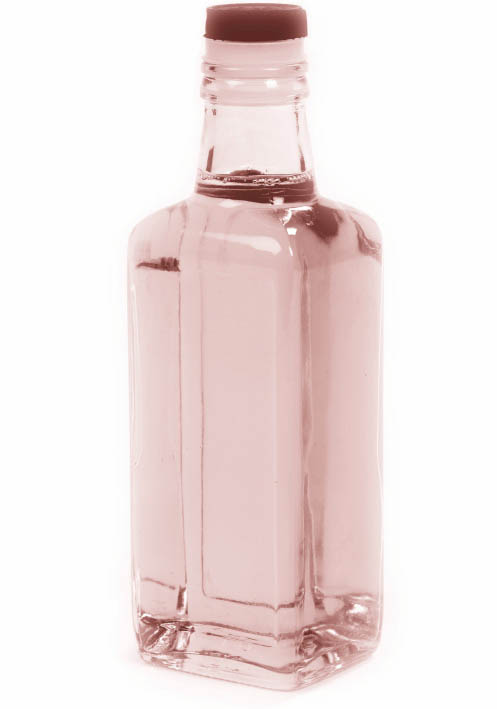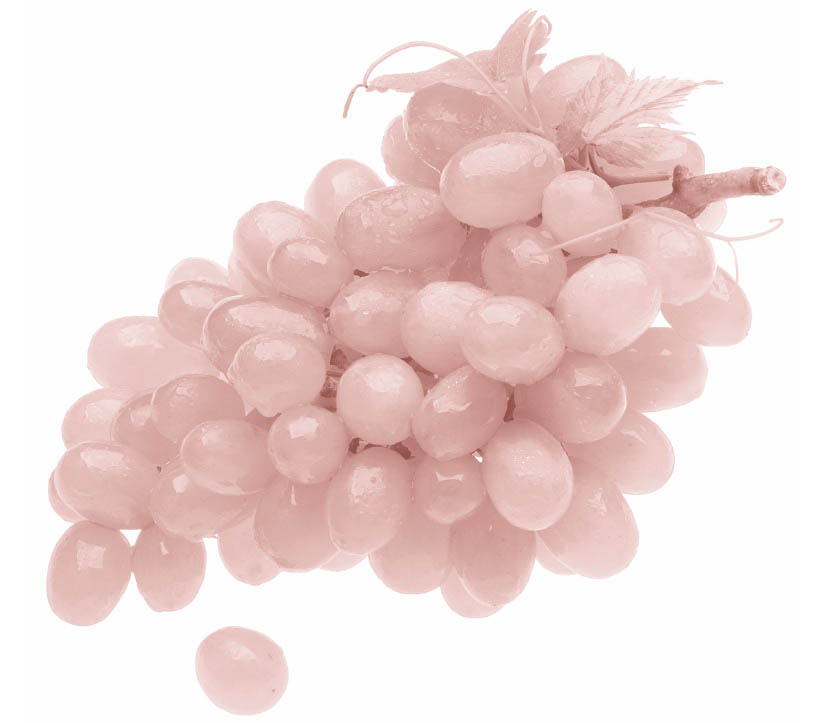

Now that the Aromatic Pantry is stocked with your fragrant selections, let’s take a look at the ways in which to use aromatic oils. Just as the stars of a play rely on supporting cast members to provide structure, harmony, and interest, aromatic oils perform best when used with complementary ingredients that highlight their distinct characteristics.
Unscented oils come from the seeds, nuts, kernels, and flesh of different plant products or from the fat of animals. These oils fortify handmade skin-care products with rich moisturizing capabilities. Unscented oils can form 100 percent of a skin-care product, as in the case of a facial massage oil, or as little as 5 percent.
Fixed plant-based oils are produced by first cleaning and cooking the seeds and nuts from which the oils are extracted. Then the seeds or nuts are processed by expeller pressing or solvent extraction.
Expeller pressing squeezes the nuts against a metal press head, creating enough pressure and heat to force the oil from the nuts. Oils produced using this method are typically called “cold pressed,” though this is somewhat of a misnomer because a great deal of heat, though naturally generated, is employed.
Solvent extraction extracts oil from nuts or seeds by first combining them with solvents, then evaporating the solvents, leaving the oil. This method may leave behind traces of solvent residue. To avoid solvent residues, it is best to use cold-expeller-pressed oils when possible. Regardless of how oils are extracted, they are often further refined to remove certain solids, colors, and aromas. This process employs anything from caustic soda to diatomaceous earth and silica.
It is hard to predict the shelf life of an oil because packaging, storage, and shipping practices differ and you never know how old the oil is when it reaches your cupboard. Your nose is the best indicator of the freshness of an oil, and you should discard any rancid oil, distinguishable by a sour, foul odor. If an oil is shipped to you in this condition, return it for a refund. To retard spoilage, oils should be stored in containers that shield them as much as possible from light and air. I keep most oils that I will not use quickly in the refrigerator or freezer.
Apricot kernel oil, taken from the kernel of the seeds yielded by the apricot tree (Prunus armeniaca), is often used in hair dressings and massage oils. It is an excellent softener for the delicate skin around the eyes, mouth, and neck. Grapeseed oil is an acceptable substitute for this very soothing oil, as is sweet almond oil. Use apricot kernel oil as up to 100 percent of your base blend.

Avocado oil, taken from the flesh of the fruit of the avocado tree (Persea americana), is very rich and, in its unrefined state, contains nutrient-laden waxes, proteins, and minerals. It may transfer a slightly green tint to finished products. Though it also has a distinct and pungent odor, I prefer to use the unrefined oil in many of my skin-care products (especially ones for dry, stressed, and chapped skin), because it has higher levels of protein and vitamins A, D, and E than refined oil. Use up to 100 percent as your base blend, especially for extremely dry skin.
Borage seed oil, from the seeds of the borage plant (Borago officinalis), is high in gamma-linolenic acid (GLA), a fatty acid that maintains healthy skin and repairs tissue damage. Borage seed oil is most useful for dry, mature, and aging skin, and its benefits are apparent even when it is used in small quantities. Use as 5 percent to 10 percent of your base blend.
From the Ribes nigrum plant, black currant seed oil is loaded with fatty acids, especially GLA. Like borage seed oil, black currant seed oil supports the reconstruction of damaged skin and other cell membranes. This oil is a very valuable skin-care ingredient, and it has the price tag to prove it. Use as 5 percent to 10 percent of your base blend.
Camelina seed oil is taken from the seeds of the cruciferous annual Camelina sativa. Also called gold of pleasure oil, camelina oil is high in nutritive fatty acids, which help improve the elasticity of the skin. Use as 5 percent to 10 percent of your base blend.
This oil is taken from the seeds of the camellia tree (Camellia sasanqua), which is native to parts of Asia, where it is used extensively as a beauty aid and skin-restructuring agent. Use to form up to 20 percent of your base blend.
Canola oil, extracted from the seeds of the rape plant (Brassica napus var. oleifera), is extremely light in color and penetrates the skin easily, making it a nice massage-oil base when the more expensive oils are unavailable. Use to form up to 100 percent of your base blend. You may use the canola oil found in your local grocery store.

Castor oil is a rich, smooth oil that I like to add to solid perfumes, lip balms, and other products designed to create a protective barrier between the skin and harsh environmental conditions. It is extracted from the seeds of the castor plant (Ricinus communis) and is used in vast quantities in commercial lipsticks because it’s an excellent emollient. Castor oil makes hair shiny when used as a conditioner and is great for brittle nails and extremely dry skin. In addition to being very thick, this oil dries upon prolonged contact with air. Use to form up to 20 percent of your base blend, or up to 50 percent if you are making a lip balm or hair pomade.
Cocoa butter is a well-known skin lubricant, and its natural cocoa scent is a plus for chocolate lovers. Cocoa butter is the solid fat from the roasted seed of the cacao plant (Theobroma cacao), which is composed of 40 to 50 percent solid butterfat. The oil was first widely used in the United States in Hershey, Pennsylvania, when a candy maker discovered that it combined with other ingredients to make a creamy, edible substance — thus, the Hershey Bar was born. The distinct aroma of cocoa butter is difficult to overcome with essential oils, so you may wish to substitute unscented cocoa butter or a similarly textured fat.
Cocoa butter is solid at room temperature and is a wonderful additive to lotions, creams, and soaps, especially if you want to thicken the texture a bit. If added in a large enough quantity, cocoa butter may give a slightly yellow tint to many cosmetics. Use up to 50 percent of your base blend, depending on desired thickness.
Three types of oil are extracted from the kernels of the coconut (Cocos nucifera). Refined coconut oil is highly processed and used frequently in handmade soap to promote rich lather. I like to use it in lotions because it adds a creamy texture and is absorbed readily by the skin. Virgin coconut oil is extracted from the coconut by use of a centrifuge that separates the fresh oil from many of the solids in the plant material. Both oils are semisolid at room temperature, but the virgin coconut oil has the benefit of smelling just like a sweet, freshly cracked coconut. A third type of oil, fractionated coconut oil, is a clear liquid that is squeezed from coconuts by use of high-pressure apparatus. It is a favorite of massage therapists since it is easily absorbed by the skin and has a remarkably long shelf life.
Note that I specify which type of coconut oil is called for in different recipes. Use refined coconut oil as up to 50 percent of your base blend, or use the virgin and fractionated versions straight as a massage oil or hair-conditioning treatment. Fractionated and virgin coconut oil can be used as up to 100 percent of a cream or lotion base blend.
Emu oil is processed from the fat of emus farm-raised for their meat. It is used in cosmetics for its moisturizing effects and ability to penetrate the skin. It is anti-inflammatory and cell restorative, and it helps fade scars and ease muscle pains. Use refined emu oil as up to 100 percent of your base blend, using lower percentages for lotions and creams and higher percentages for products designed to hasten healing of burns (including sunburn), scar tissue, and sprains. This oil turns rancid quickly, so store it in the refrigerator. If you purchase emu oil that smells spoiled, return it to the supplier immediately.
Evening primrose oil is derived from the seeds of the evening primrose (Oenothera biennis), whose flowers blossom during the evening and wither in the day. The oil aids in skin cell restoration and contains a high percentage of GLA. As with borage oil, superb results can be obtained even when the oil is used in tiny quantities. Use as 5 percent to 10 percent of your base blend.
Grapeseed oil is taken from the seeds of the fruit of the grape plant (Vitis vinifera). Though I have seen labels claiming it is cold pressed, I understand that cold-pressed grapeseed oil has a very unpleasant odor. Solvent-extracted grapeseed oil has a slightly nutty aroma and flavor, which accounts for its use in salad dressings. This oil is useful for oily skin, but you will want to avoid it if you prefer to use non-solvent-extracted ingredients in your products. Use as up to 50 percent of your base blend.

Hazelnut oil, used extensively in classic French cooking, is extracted from hazelnuts (Corylus avellana). Its skin-penetrating qualities make it especially suitable for any skin type, and it even contains a small amount of vitamin E. Use as up to 100 percent of base blends.
Heliocarrot oil is taken from the roots of the Daucus carota plant. These roots have an extremely high concentration of water and only small quantities of the precious oil. Once removed, heliocarrot oil is typically suspended in a base oil, usually olive. Heliocarrot oil is rich in vitamin E and beta-carotene, as revealed by its bright orange color, and is packed with nutrients that help rejuvenate and fortify the skin. Nevertheless, overuse of this oil tints the skin orange. Use as up to 20 percent of your base blend.
Hemp seed oil is extracted from the seeds of a very useful tall weed (Cannabis sativa) that grows around the world. It contains high levels of essential fatty acids, including linolenic acid, which help stimulate cell growth. It is excellent for dry skin and is absorbed quickly. Use as 10 percent to 15 percent of your base blend.
Illipe butter, also called Borneo tallow, is taken from the nuts of the illipe tree (Shorea stenoptera), which grows in Africa, Asia, and South America. It is similar to cocoa butter in its texture and skin-soothing properties. Use as 5 to 20 percent of base blends.
An Aromatic Profile
Melody Upham began crafting handmade soap in her Michigan home in 1994 after reading a Reader’s Digest “Back to Basics” excerpt on the topic. Within a year, Melody started a soap-making business, and her entrepreneurial talents blossomed. Aromatherapy began to captivate Melody. She discovered that the oils did much more than just scent her soaps; they also relaxed tension, decongested nasal passages, eased headaches and muscle aches, and so much more. Melody soon found herself incorporating aromatics into lotions, muscle balms, and massage oils.
As time passed, Melody started providing a small selection of essential oils and raw materials to other manufacturers of handmade skin-care products. She also began an Internet discussion group that shared soap-making information, recipes, and materials sources. Amazingly, Melody ran the business from her dining room, no easy task with three children and a husband who insisted on being fed, despite Melody’s newfound passion.
In 1997, Melody moved her company out of the dining room and into a much larger facility. What started as a hobby and soon became an obsession has blossomed into Rainbow Meadow, Inc. The staff consists of six full-time employees and the business is entirely family owned and operated.
My favorite Rainbow Meadow product is not a product at all but its unmatched, knowledgeable customer service with a smile.
Jojoba oil is the thick, pale yellow liquid that is extracted from the beanlike seeds of a desert shrub (Simmondsia chinensis). An excellent lubricant and hair conditioner, jojoba closely resembles the natural moisturizing oil, sebum, that is secreted by human skin. Jojoba has an exceptionally long shelf life and is absorbed readily by all skin types. Use as up to 25 percent of your base blend.
Not to be confused with cocoa butter, kokum butter is one of the hardest vegetable fats. It is removed from the kernels of the red mango, or kokum, tree (Garcinia indica), which is native to India. It can replace cocoa butter, as their moisturizing properties are similar. Unlike cocoa butter, however, kokum butter is odorless. Use as 5 to 20 percent of base blends.
Kukui nut oil is produced mainly in Hawaii and Tahiti and comes from the nut of the kukui tree (Aleurites moluccana). Kukui nut oil is high in essential fatty acids; thus, it is helpful for softening and restructuring skin. The oil is an excellent choice for sensitive skin and skin that is mature, damaged, and wrinkled. Use as 5 to 10 percent of the base blend.
Anhydrous (containing no water) lanolin is a fatty substance taken from the wool of sheep. Since lanolin thickens products, the use of too much in an emulsion may cause it to become sticky. Lanolin has some emulsifying properties. I typically use this oil as no more than 10 percent of the base blend for an emulsion, but I use up to 20 percent for dry-skin and diaper-rash products and pomades designed to protect and add shine to wavy, textured hair.
Lecithin is a thick substance taken from egg yolks and soybeans. Although not technically an oil, it can be used as one in your products. It also acts as an emulsifier and will add a yellow tint to your products. Use as up to 10 percent of your base blend.
Produced mainly in Hawaii, macadamia nut oil, from the popular and delicious nut Macadamia integrifolia, is similar to the sebum produced by human skin. Macadamia nut oil is very emollient and soothing. It is one of my favorites in facial creams because its absorption rate is so high and it blends well into emulsions. Use as
10 to 20 percent of your base blend.
Mango butter is taken from the seed kernels of the fruit of the mango tree (Mangifera indica). It is softer than cocoa butter, but still quite solid at room temperature. I frequently interchange mango and shea butter (a similar butter made from the karite tree) if I am out of one or the other. Use as up to 50 percent of your base blend.
A by-product of the petroleum industry, mineral oil is not particularly beneficial for any skin type. Mineral oil is heavy and barely penetrates the skin — a fact made obvious by the gloss left on the skin’s surface long after the application of the oil. I like to use it and its cousin, petroleum jelly, in products designed for thick, wavy, coarse-textured hair (like mine) because it provides a great deal of protection against harsh winters and the pounding summer sun. I strongly recommend against substituting mineral oil for other oils in skin-care products.
Olive oil is pressed from very ripe olives from Olea europaea trees grown around the Mediterranean Sea. Olive oil is best if extra virgin — obtained from the first pressing of the olives. If used in sufficient quantity, it may transfer a slightly green tint to products. Subsequent pressings of oil (virgin, pomace, and so on) contain far fewer nutrients than the extra-virgin variety. When combined with a lighter oil, olive oil makes a wonderful massage mixture for dry skin. Use as up to 100 percent of the base blend.
A very light oil extracted from the nut of the Arachis hypogaea plant, peanut oil is excellent for oily skin or for use in facials. Many people are allergic to it, however, so it is especially critical to perform a skin-patch test (see Performing a Patch Test for instructions) before using this oil.
Fabulously rich, rose hips seed oil is a staple for any good dry-skin cream, particularly one designed to heal scar tissue. The oil is extracted with solvents from the ripened fruit of a hybrid, thorny, wild rosebush (Rosa rubiginosa, R. moschata, R. canina), which is common in South American countries. The oil is extremely high in GLA and vitamin C and is believed to regenerate the skin and aid in counteracting the effects of aging. Use as 5 to 10 percent of your base blend.
Safflower oil, extracted from a plant called Carthamus tinctorius, can be used in any skin-care product, though it seems to contribute a somewhat sticky texture in some formulas. Use as 5 to 15 percent of your base blend.
Aromatic, soothing, and anti-inflammatory, sesame seed oil is produced from common sesame seeds (Sesamum indicum). Because its nutty aroma tends to linger if used in any substantial quantity, it is at its best when used as no more than 25 percent of the blend — unless, of course, you enjoy the scent.
Derived from the seeds of the karite tree (Butyrosperum parkii), which grows in Africa, shea butter is milder, creamier, richer in texture, less solid, and more emollient than cocoa butter. It can be used as a natural lipstick base or as a softener in skin treatments. Use as up to 50 percent of your base blend.
Squalene, sometimes called squalane, is produced from olives, wheat germ, and even shark liver; be sure to request the plant-based squalene if this is important to you. Squalene closely resembles the sebum produced by human skin, so it is easily accepted by the skin and provides smooth, light moisture. Use as up to 20 percent of your base blend.
Sunflower oil is obtained from the milling of the seeds of the tall and radiant sunflower (Helianthus annuus). The oil is rich in vitamins A and E and is inexpensive enough to use in any skin preparation. This light oil will leave what has been called a “second skin” after drying. Some like this feeling; others do not. Whatever your preference, this oil is particularly useful in the winter, when extra protection is desirable. Use as up to 100 percent of your base blend.

Sweet almond oil is expressed from the seeds of the almond tree (Prunus dulcis). It is very different from bitter almond essential oil, produced by distillation of water-soaked almond kernels to obtain an oil that smells like marzipan. Guard against confusion of these two oils; bitter almond essential oil is highly toxic and should not be used in your creams, lotions, or massage blends. Sweet almond oil is light but penetrating and is often used in massage blends, as it makes a fabulous base oil for essential oils. Use as up to 100 percent of your base blend.
Tamanu oil is a rich, deep, thick, brown-green oil that is referred to in some catalogs simply as foraha. The oil is taken from the ripened seeds of the Calophyllum inophyllum tree, which is native to Tahiti and also grows in damp environments in Madagascar, other parts of Africa, and the Far East. It has a luscious smell reminiscent of butter pecan ice cream or Kahlúa (depending on whom you ask) and is one of my favorite ingredients to use in skin-care products. Use as no more than 25 percent of your base blend.
Wheat germ oil (Triticum spp.) has a distinct wheat-nut aroma that is difficult to overcome unless used in minute quantities in any blend. It is high in protein and vitamin E, so it can extend the shelf life of other oils. Use as up to 5 percent of your blend.
Vitamin E is a natural antioxidant and essential vitamin obtained by the processing of food-grade vegetable oils, such as wheat germ (it is also found in large quantities in sea buckthorn berries). Vitamin E helps eradicate free radicals from the skin, and because it retards oxidation, it helps extend the shelf life of many products. Vitamin E should be purchased only in small quantities since it quickly becomes rancid. Be sure to keep this precious ingredient refrigerated. Use as up to 5 percent of your blend.
In addition to base oils and aromatic oils, several other botanicals can be used to fortify handmade skin-care products. These additional ingredients fall into three basic categories: water-type botanicals and vegetable glycerin; herbs; and colorant botanicals.
All creams and lotions are made with water. The variety of waterlike ingredients you have to choose from includes herbal infusions and diluted plant gels. Vary the proportions according to the desired texture of the finished product.
Distilled water. As a rule, always use distilled water to make your handmade toiletries. Tap water and springwater often contain chemicals or additives that are neither needed nor desired in skin-care products. Distilled water is available at most supermarkets, and many bottled-water companies will deliver distilled water instead of springwater for a nominal surcharge.
Of course, you can use plain distilled water as 100 percent of the water portion of your cream or lotion. However, for variety and superb skin-soothing properties, you will want to experiment with a few different plant waters, or hydrosols, as well. For more information, see The Best Hydrosols for Skin Care. Hydrosols may be used alone or in combination with plain distilled water in your products.
Fresh juices. I use a juicer to extract the juice of fruits and vegetables and incorporate it in small quantities into products — then drink the rest! Some of my favorite juices to use are lemon, grape, tangerine, strawberry, ginger, pineapple, grapefruit, carrot, cucumber, and apple. Products containing fresh additives, such as these juices, should be made in small quantities, used within a few days of manufacture, and stored in the refrigerator.
Aloe vera. Aloe vera is pressed from the thick, rubbery leaves of the aloe vera (Aloe barbadensis) plant. The viscous gel is a renowned skin soother that relieves sunburn and the symptoms associated with several adverse skin conditions, such as psoriasis and eczema. Aloe vera gel is different from aloe vera juice. Also, be aware that several different types of aloe products are sold on the retail market.
Read the labels carefully, and purchase the aloe vera gel that has the least amount of additives (and no alcohol) and the highest content of pure aloe. In addition, you can purchase pure aloe vera gel that is diluted with an equal part of distilled water; it is frequently called 1:1 in sales literature. Aloe vera is best when used fresh, so if you have a plant in your home, simply break off a leaf, split it open, and measure out enough gel for your formula.
Vegetable glycerin. Vegetable glycerin is a water-soluble humectant. Since it attracts moisture from the surrounding atmosphere, it’s a boon in skin-care products used in damp, humid environments. If glycerin is used excessively in dry environmental conditions, it can begin to draw on the skin’s own natural moisture, resulting in dryness.
Herbal infusions. You can infuse the active ingredients of herbs into water by making a tea and using the tea as all or part of the liquid portion of your formula. Choose from the herbs listed below, or select your own favorites. To make an infusion, simply allow the herbs to steep in hot water for 10 to 20 minutes. Strain, and use the herb-infused water in place of distilled water in your recipe.
Herbs have a long history of providing multiple skin-care benefits, and there is no end to the different ways in which they can be used in handmade products. For example, chamomile tea bags applied to the eyelids will soothe and relax, while a massage oil infused with plantain, calendula, and chickweed will help heal dry skin conditions. I prefer to use fresh plant material when possible, but dried plants are often more readily available.

Though there are a number of synthetic colorants you can add to your skin-care products, I will concentrate here on those products of nature that add gentle tints while also lending skin-soothing properties.
Chlorophyll. Chlorophyll is found in plants; it’s the result of their ability to harness the sun’s energy through the process of photosynthesis. It is available in powdered or liquid form and has a rich green color.
Herbs. In addition to their healing properties, many herbs can add all-natural color to your skin-care preparations. The best herbs to use are:
An Aromatic Profile
Leslie Plant (yes, that’s her real name!) is the inspirational owner of Leslie’s Garden, and just a few minutes in her presence will underscore that her love of plants is more than just “name deep.”
Simply stated, Leslie was born to live the herbal life. The garden in her backyard in a suburb of Washington, D.C., is the source of her inspiration and contains a thriving cornucopia of shapes, textures, colors, and aromas. Nearly all of Leslie’s toiletries are infused with herbs from her garden.
Leslie is sharply focused on activities that allow her to share her love of herbs with as many people as possible. She hosts educational herb walks through her garden, and she also teaches soap- and toiletry-making classes. Leslie offers an assortment of luscious handmade soaps, and each spring she makes soothing creams and balms for friends and family. One of her favorite springtime brews is Green Salve, a balm for skin irritations that she infuses with fresh plantain, comfrey, chickweed (from her garden, of course!), and essential oils.
Says Leslie of her craft, “I practice and share these soothing, aromatic arts in celebration of the long line of wise, plant-loving women before me. I honor these women teachers each time I handle the tools of my trade.”
My favorite Leslie’s Garden product is Rosita’s Belize Bar, a fragrant lemongrass soap named for an herbalist who has dedicated her life to research on and the study of native plant life in Belize.